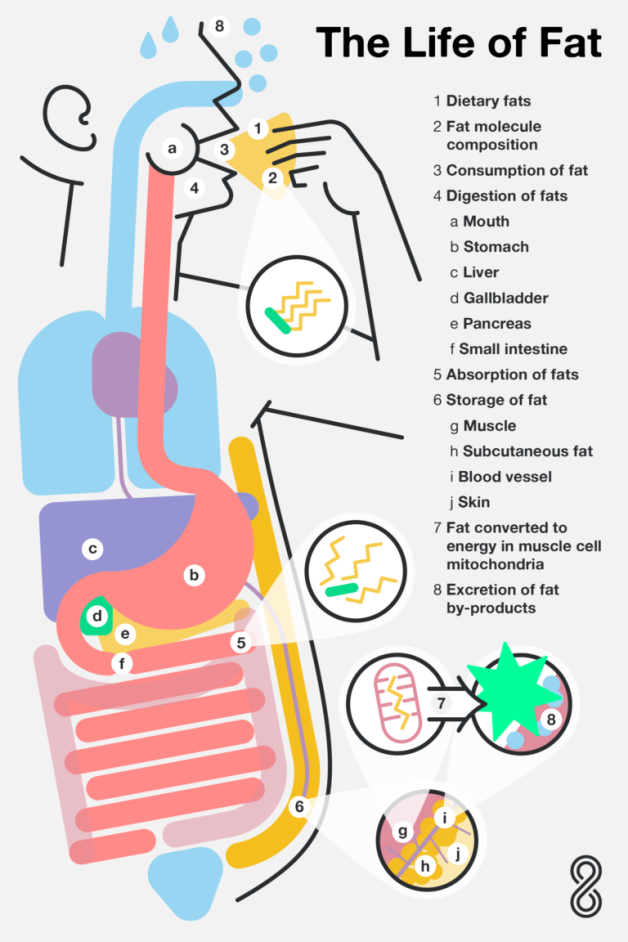
The Science of Fat-Burning: Unveiling the Secrets to Effective Weight Management
In the age of fitness fads and ever-evolving diet trends, the concept of “fat-burning” stands as one of the most sought-after goals for those looking to shed excess pounds and achieve a healthier lifestyle. While it’s true that the human body possesses intricate mechanisms for burning fat, understanding how these mechanisms work is crucial to achieving sustainable and effective weight management. In this comprehensive article, we’ll dive deep into the science of fat-burning, exploring the processes, strategies, and factors that play a role in this intricate physiological phenomenon.
Understanding Fat Metabolism
Fat-burning, in the physiological sense, refers to the process by which the body utilizes stored fat as a source of energy. This process occurs through a series of complex metabolic pathways that involve the breakdown of triglycerides, the storage form of fat in adipose tissue.
1. Lipolysis: Breaking Down Triglycerides
The journey of fat-burning begins with lipolysis, a process where enzymes break down triglycerides into glycerol and free fatty acids. These components are then released into the bloodstream, where they can be transported to cells throughout the body to generate energy.
2. Oxidation: The Fat-Burning Furnace
Once in the bloodstream, fatty acids are taken up by cells, particularly muscle cells, and transported into the mitochondria, the cell’s energy-producing powerhouse. Inside the mitochondria, fatty acids undergo beta-oxidation, a process that results in the production of ATP, the body’s primary energy currency. This process is what is commonly referred to as fat-burning.
Factors Influencing Fat-Burning
The rate and efficiency of fat-burning can vary among individuals and are influenced by a multitude of factors. Understanding these factors can help optimize fat loss strategies:
1. Diet
Diet plays a crucial role in fat-burning. A calorie deficit, where you consume fewer calories than you expend, is essential for weight loss. However, the composition of your diet matters too. Low-carb, high-protein diets can enhance fat oxidation, while excessive consumption of refined carbohydrates can inhibit it.
2. Physical Activity
Exercise is a potent catalyst for fat-burning. Aerobic exercises, such as running, cycling, and swimming, encourage the utilization of stored fat for energy. Resistance training helps build lean muscle mass, which can increase your basal metabolic rate (BMR), leading to more efficient fat-burning at rest.
3. Hormones
Hormones play a significant role in fat metabolism. Insulin, for example, promotes fat storage, while glucagon and adrenaline stimulate fat breakdown. Hormonal imbalances, often seen in conditions like insulin resistance or thyroid disorders, can affect fat-burning.
4. Genetics
Genetics can influence your body’s propensity to store and burn fat. Some individuals may naturally have a higher BMR and greater fat-burning capacity, while others may face greater challenges in this regard.
5. Sleep and Stress
Inadequate sleep and chronic stress can disrupt hormones like cortisol, leading to increased fat storage and reduced fat-burning. Prioritizing quality sleep and managing stress is crucial for effective fat loss.
6. Age and Gender
Metabolism tends to slow with age, making fat loss more challenging. Additionally, hormonal differences between genders can impact how and where fat is stored and burned.
Effective Fat-Burning Strategies
Achieving successful fat loss involves a multifaceted approach. Here are some effective strategies to enhance fat-burning:
1. Caloric Deficit
Creating a caloric deficit through diet and exercise is fundamental to fat loss. A moderate calorie deficit of 500-1000 calories per day can result in a sustainable and healthy rate of weight loss.
2. Balanced Diet
Aim for a balanced diet that includes whole foods, lean proteins, healthy fats, and complex carbohydrates. Avoid extreme or fad diets, as they can be unsustainable and unhealthy.
3. Regular Exercise
Incorporate both aerobic and resistance training into your fitness routine to maximize fat-burning and muscle preservation. Aim for at least 150 minutes of moderate-intensity aerobic activity per week.
4. Adequate Sleep
Prioritize sleep and aim for 7-9 hours of quality sleep each night to optimize hormonal balance and fat metabolism.
5. Manage Stress
Practice stress-reduction techniques such as meditation, yoga, or deep breathing exercises to keep cortisol levels in check.
6. Stay Hydrated
Proper hydration is essential for efficient fat metabolism. Drinking enough water ensures that the body can efficiently transport and use fatty acids.
Conclusion
The science of fat-burning is a complex and dynamic process deeply intertwined with our overall metabolism and health. While there is no magic bullet for rapid weight loss, understanding the underlying mechanisms and adopting a holistic approach to diet, exercise, sleep, and stress management can help individuals achieve their fat loss goals in a sustainable and healthy manner. Remember that successful fat-burning is not just about aesthetics but also about improving overall health and well-being. Always consult with a healthcare professional or registered dietitian before making significant changes to your diet or exercise routine to ensure they are tailored to your individual needs and goals.



